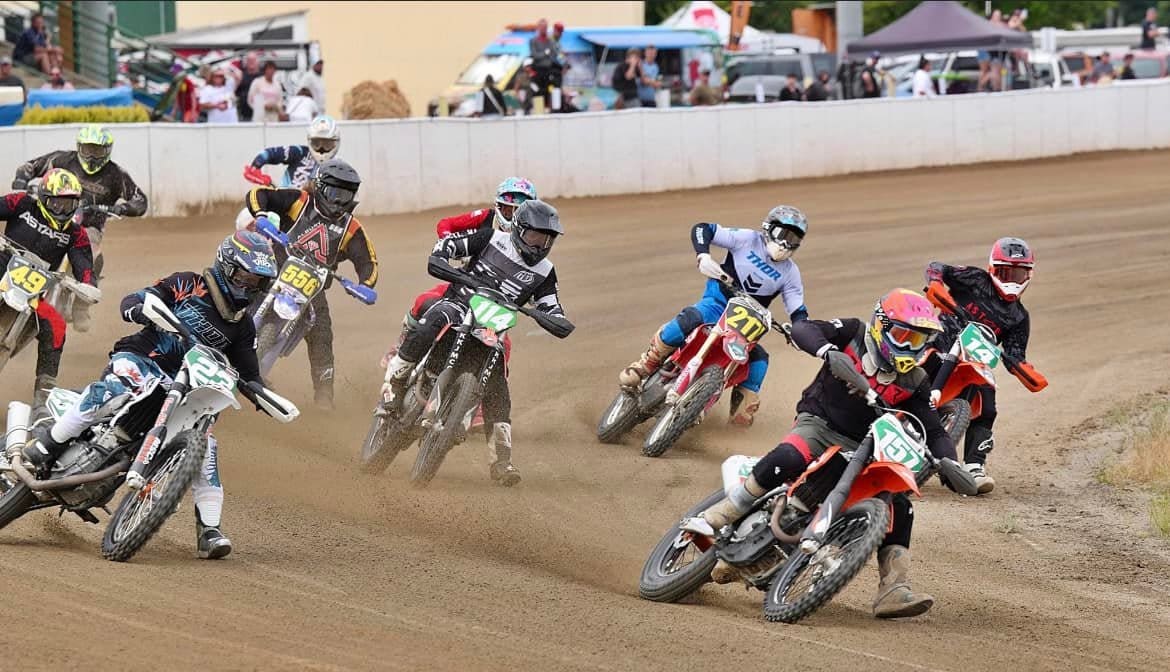Now in its eighth year, Melbourne’s Motoclassica held 12-14 October, 2018, is one of the world’s top classic motor shows, and it has featured motorcycles since its inception. Held in the Victorian state capital’s 1880 World-Heritage-listed Royal Exhibition Building, it attracts tens of thousands of motoring fans. This year, the four-wheel-focus was on 90 years of Australian Grand Prix car racing while the motorcycling component celebrated 60 years of Triumph’s Bonneville and 70 years of Harley-Davidson’s Panhead. Come and have a wander around.
1959, 1961, 1964 Triumph 650 Bonneville T120
Jon Munn
Drag racing fans know Jon Munn as the brave pilot of the fearsome Hobbit, a twin-engine Weslake dragbike he raced in Europe in the early 1980s. Classic enthusiasts know him as a serial winner of motorcycle awards at Motoclassica. This year he got another gong for the restoration of a 1959 Bonneville from the first months of production.
“I only use NOS [new old stock] or restored original parts,” said Munn. “I work on these projects with Geoff Knott. He does the research and assembly and I source the projects and parts.”
In the early 1960s two iconic British automotive products were hitting showrooms around the world: Jaguar’s E-Type sportscar and Triumph’s Bonneville. Both would become the most desirable British roadburners of the 1960s, and both were on show at the Motoclassica. It was a sensory overload to look at the detail and beautiful colours of Munn’s 1959 and 1961 Bonnevilles. But then you had to ask yourself why, after four years of stunning paintjobs, did Triumph use plain white for its first unit-Bonnie of 1964?
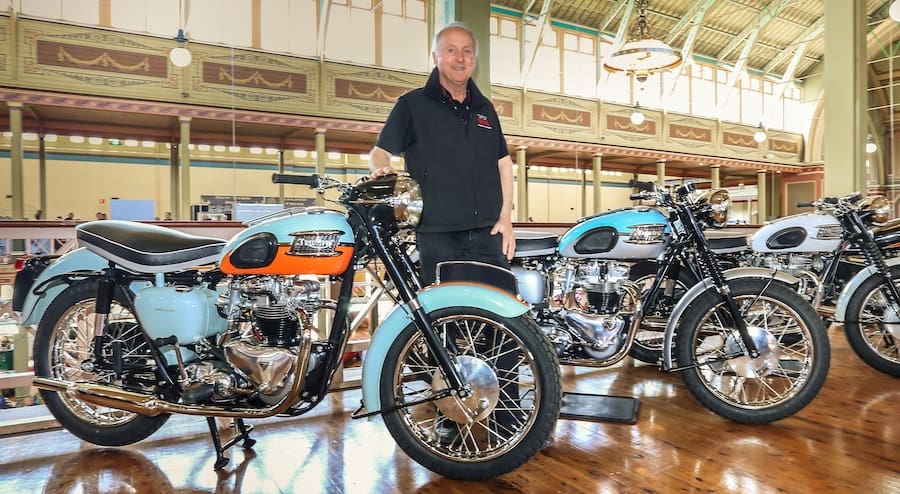
1977 Triumph Bonneville Jubilee T140
Johnny Gee
The speedo reading on this Jubilee Bonnie may just read 13,000 miles but this unrestored survivor has actually travelled nearly 100,000 miles.
“It went from the factory to Los Angeles, and then ended up in Pennsylvania, before being imported to Australia,” says owner Johnny Gee. “Now it looks like I’ve sold it to Sweden.” Although Triumph’s flagship twin-cylinder model had long been overtaken in the performance stakes, even by its Trident triple stablemate, this limited-edition version put a new focus on the Bonneville.
Queen Elizabeth’s 25th year on the British throne was celebrated with a limited run in a striking red, white and blue paint scheme. Initially 1000 were issued for the UK with the large home-market petrol tank and a similar number for the US with that market’s tear-drop-shaped tank. Another 400 were built to meet demand from other markets, including Australia. Two decades after the launch of the original Bonneville, the factory kept developing the twin, with an American special in 1979, an eight-valve version in 1982 and an electric-start version just before the factory closed in 1983.

1948 Harley-Davidson EL Panhead
Sean Crosthwaite
The Panhead model, so named for its kitchen-pan-like valve covers, holds a special place in Harley-Davidson’s history. Launched in 1948, factory designers revisited its styling several times. Willie G. Davidson, grandson of one of the company’s founders, explained this in 2003 at H-D’s 100th birthday party.
“We recreated the visual effect of its hardtail (no rear suspension) frame on our 1984 Softail model,” he said. “We then recreated its front forks for the 1988 Springer Softail. We went deeper into the legacy when we designed the 1997 Heritage Springer to resemble the 1948 model.” Available in two engine sizes, 989cc and 1208cc, buyers preferred the bigger twin. After just one year, Harley-Davidson replaced the Panhead’s springer-style forks with hydraulically-controlled telescopic front suspension it called a hydra-glide system. The Panhead wasn’t much more powerful that its predecessor, the Knucklehead, but with aluminium heads and hydraulic valve lifters it ran cooler and was easier to maintain. Sean Crosthwaite owns and rides both.
“I find the Knucklehead’s engine has a crisper response,” he says.
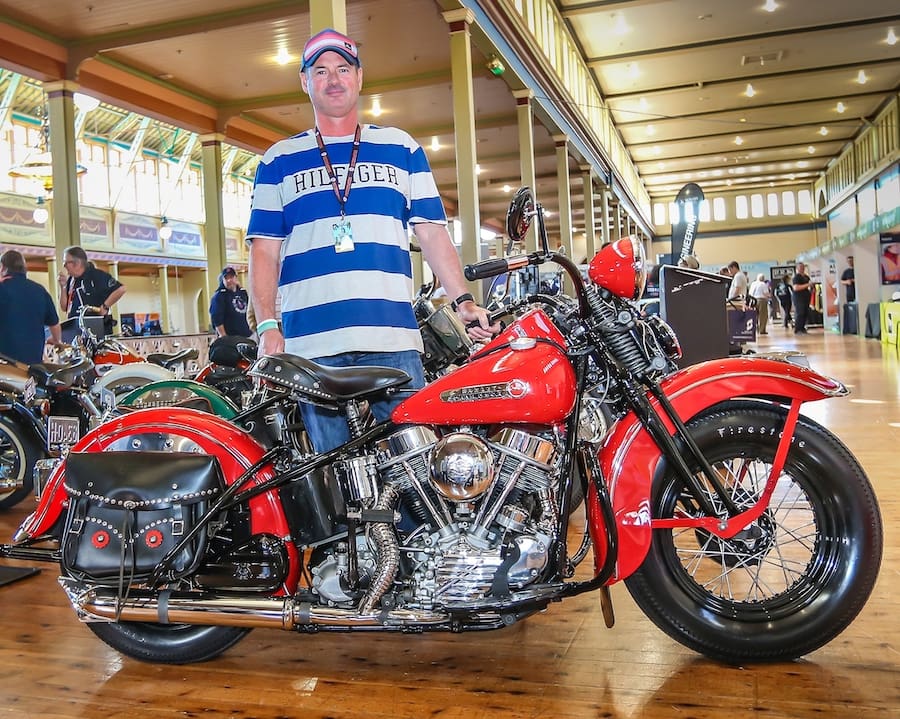
1956 Harley-Davidson FLH Hydra-Glide
Eddy and Lacey-Rae Garner
As production continued into the 1950s H-D listened to feedback from dealers and owners with high mileage on their Panheads. The result was serious strengthening work inside the 1200cc V-twin engine. Larger taper-roller main bearings required a new crankcase casting while the quality of the crankshaft itself was improved. A new high-lift camshaft, called the Victory, increased power nearly 12 percent.
At 4800rpm, the Hydra-Glide made 60hp (45kW), good enough to propel it along the new interstate highways at an easy 75mph (120km/h). For the first time in 17 years, H-D used two-tone paint on its petrol tanks for a visually striking result. Eddy Garner bought this example as an “older restoration” in California 20 years ago. Since then he has ridden it “every time I can”, often with daughter Lacey-Rae as pillion. Trips have involved Melbourne to Darwin, Sydney and even around New Zealand’s South Island. These big miles prove H-D achieved a perfect balance of touring performance and reliability as early as 1956.
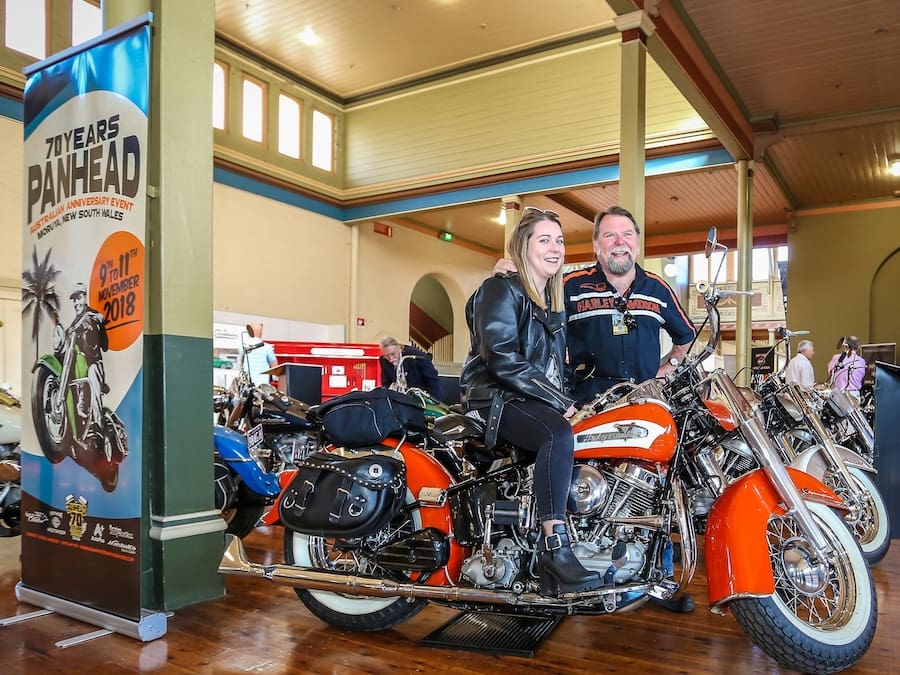
1958 Harley-Davidson FLH Duo-Glide
Paul Bailey
Sometimes a motorcycle is meant for you. Just ask former policeman Paul Bailey.
“I’d spent 30 years looking for a Harley like this,” he said. “And when I got this one I realised that not only was it manufactured in the year of my birth but the crankcase numbers are a combination of my class number at the police academy and my serving badge number.”
A major upgrade for 1958 resulted in rear suspension to complement the front, hence the name Duo-Glide. It added around 40kg in weight but brought Harley-Davidson’s big-twin tourer up to date. Enclosed in chrome covers, the rear suspension didn’t detract from the Panhead’s styling but some traditionalists thought the upgrade unnecessary. Another big update was the introduction of a hydraulically-operated rear brake. Earlier models had tractor-like mechanical rear brakes. Other improvements included a new oil tank, deeper cooling fins on the engine’s cylinders and more efficient crankcase breathing. Better quality valve-train components were also installed, along with clutch and transmission upgrades.

1972 Honda SL100
Charles Edwards
“Yes, it probably only looked like this for the first 10 minutes of its life,” laughed Charles Edwards. His restoration of what became one of motorcycling’s most used and abused models, was correct even down to Honda-embossed bolt heads.
Honda’s SL 100 was ‘the right bike at the right time’ for Australians. This small road-trail model set the 1970s scene for a decade of teenage off-road riding. It also helped introduce Australian farmers to motorcycling, both as a transport alternative to the tractor/paddock-basher car and a useful tool to supervise the dog rounding up sheep on small properties. In many ways the SL100 was the precursor to today’s quad bikes. As a result, this single-cylinder, overhead-cam four-stroke was often run into the ground. But you couldn’t kill it. So several derelict examples can be collected and turned into one worth showing at a major exhibition. This is exactly what was done here. Produced for several years, there is a worldwide resource of ‘new old stock’ to help in restoration.

1956 Maserati T2
Frank and Christian Arronis
“It’s a father-son project,” said Frank Arronis of his unusual motorcycle. “Christian has got his hands dirty for the first time.” Everyone knows about Maserati cars but what about Maserati motorcycles? This little-known branch of industrialist Adolfo Orsi’s extensive corporation existed from 1953 until 1960. He entered the booming Italian motorcycle industry by simply buying an existing small Italian manufacturer and rebadging it with Maserati’s trident logo. Along with local sales, the company had its eyes on exports to the US and Europe.
Maserati brought car-like production efficiency and design to its 123cc two-stroke and slightly larger four-stroke overhead-valve and overhead-cam models. The T2 used a two-stroke engine based on a proven German DKW design. Well designed, with contemporary styling complimented with excellent overall finish, the Maserati range started to gain market traction. Then it succumbed to sales pressure from its larger Italian rivals coupled with a corporate restructure at Maserati’s car operation. Frank discovered this project after years collecting and restoring Maserati cars.
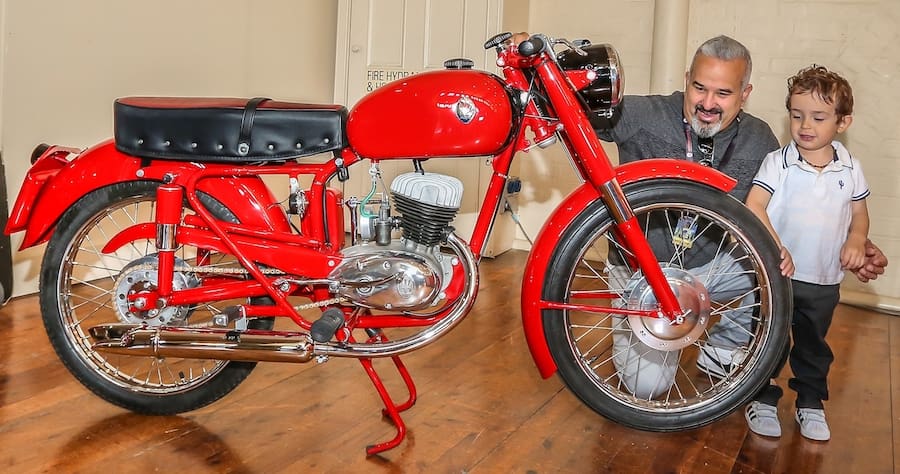
1956 Lambretta FD 3-wheeler
Peter Barclay
Three-wheeler scooters are very rare in Australia but this Lambretta was delivered new to Ansett Airlines in Perth in 1956.
It was used to ferry small items and last-minute baggage to planes before being sold off and ending up in Queensland. After that it was actually driven 1000km down to Sydney before being left in a shed for decades. Peter Barclay had previously restored a Lambretta three-wheeler and jumped at the chance to buy this one.
It took over a year to restore by Melbourne’s so-called Vespa and Lambretta wizard, a private man hailing originally from Florence, Italy, who goes by the name Roberto.
“At present it is painted in suitable colours for the ice-creamery I turn it into sometimes for charity work,” said Peter. “But I have tracked down one of Ansett Airlines (it was liquidated in 2002) original signwriters and will soon get it repainted.”
The FD has a turning circle of less than two metres and its leaf-spring rear suspension means it can carry 300kg.
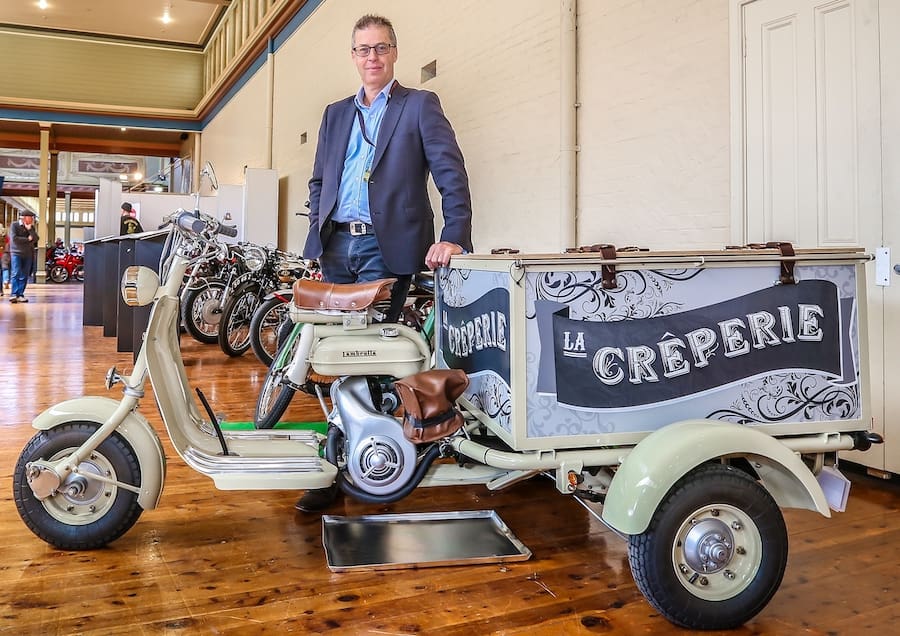
Words Hamish Cooper Photography FelixPix






